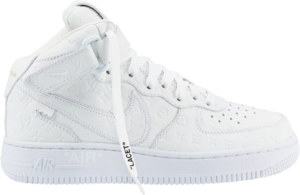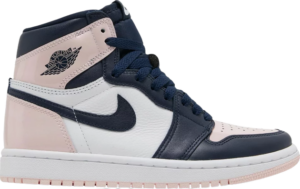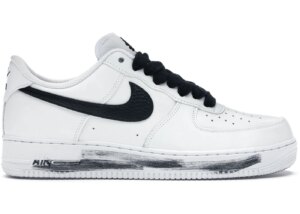| Section | Summary |
|---|---|
| Introduction | An introduction to sneakers and streetwear, their increasing popularity, and the purpose of this guide. |
| History | An exploration of the origins of sneakers and streetwear, the key moments, and influential figures in their development. |
| Sneakers: Types & Styles | An overview of different types of sneakers and their popular brands. Discussing the significance of limited editions and collaborations. |
| Streetwear: Key Elements & Brands | A look at the key elements of streetwear fashion and popular brands. A discussion on the influence of streetwear on mainstream and luxury fashion. |
| Styling Tips | Tips on how to incorporate sneakers and streetwear into everyday outfits. A dive into sneaker culture and its impact on personal style. |
| Beyond Fashion | A closer look at the role of sneakers and streetwear in youth culture, music/art movements, and their economic impact. |
| Conclusion | Recap of the main points discussed in the guide, emphasizing the continued relevance and influence of sneakers and streetwear in the fashion world. |
Introduction
The influence of sneakers and streetwear has become prominent in the fashion industry over the years. This surge in popularity is not accidental, as both fashion trends have been able to constantly adapt and stay relevant in a fast-paced world. This guide aims to provide a comprehensive exploration of these fashion trends, and how they’ve been able to revolutionize the fashion industry.
Table of Contents
History of Sneakers and Streetwear
The story of sneakers and streetwear fashion is quite intriguing, and their evolution has largely been influenced by cultural movements and prominent figures.
The journey of sneakers began in the late 19th century as simple rubber-soled shoes designed for athletes. However, with time, they transcended their athletic roots and were embraced by different subcultures, from hip-hop to skateboarding, eventually becoming a mainstay of everyday fashion.
Streetwear, on the other hand, emerged in the 1980s, inspired by the skate culture of California and the hip-hop scene of New York. The fashion style became a medium for self-expression among the youth, and has since grown into a global phenomenon, thanks in part to influential figures such as Shawn Stussy and Virgil Abloh. For a more detailed exploration of these histories, check out our article on Brand Stories: Exploring the History and Impact of Sneaker Brands.
Sneakers: Types and Styles
Sneakers can be categorized into three main types: athletic, casual, and designer. Each type has its unique characteristics and appeals to different styles and preferences. For instance, the Yeezy 650 has become a popular choice for its distinct and futuristic design.
Limited editions and collaborations have also been a driving force in the sneaker industry, creating hype and adding value to these footwear pieces. An example is the unique collaboration of Daniel Johnston Vans, which beautifully incorporates art and music into the design of the sneakers.
Streetwear: Key Elements and Brands
Streetwear fashion is characterized by relaxed, comfortable items like graphic tees, hoodies, and baggy pants. It is greatly influenced by urban culture and has been embraced by popular brands like Supreme, Off-White, and Stüssy.
The influence of streetwear on mainstream fashion is evident in the designs of luxury brands like Gucci and Louis Vuitton, which have incorporated streetwear aesthetics into their collections. For a deep dive into some of these unique aesthetics, you might want to check out our Buyer’s Guides.
Sneakers and Streetwear: Styling Tips
Incorporating sneakers and streetwear into everyday outfits can be a fun and exciting fashion journey. There’s the importance of color coordination, the art of mixing different styles, and the individuality that comes with personal style.
Sneaker culture, for instance, is not just about the shoes but about the individual, the identity, and the community. For more insights on how to rock these styles with confidence, visit our Fashion Tips category.
Sneakers and Streetwear: Beyond Fashion
Sneakers and streetwear go beyond just being fashion trends. They have become significant symbols in youth culture, self-expression, and music/artistic movements. For instance, the Air Jordan brand is intrinsically tied to basketball and hip-hop culture, while brands like Supreme have a strong connection to skateboarding and punk rock music.
Moreover, the economic impact of the sneaker and streetwear industry can’t be ignored. The resale market for sneakers has created a billion-dollar industry, underscoring the economic influence of these trends.
Conclusion
In conclusion, sneakers and streetwear have had a profound impact on the fashion industry and continue to remain relevant. As these trends continue to evolve, they provide exciting opportunities for personal style exploration. So why not dive into our Sneaker Care Tips to learn how to take care of your favorite sneakers, or explore the latest additions to our collection in The Intriguing World of Unauthorized Authentic Sneakers: A Deep Dive into KickDealsonline’s Collection.
Frequently Asked Questions
1. How have sneakers evolved over the years?
The evolution of sneakers has been influenced by various factors, including technological advancements, cultural shifts, and the impact of influential figures. For a comprehensive understanding, refer to the ‘History’ section of this article.
2. What are the key elements of streetwear?
Streetwear fashion primarily includes items like graphic tees, hoodies, baggy pants, and often includes accessories like caps and sneakers.
3. What are some popular brands in the sneakers and streetwear industry?
Some popular brands include Nike, Adidas, Supreme, Off-White, and Stüssy among others.
4. How can I incorporate sneakers and streetwear into my everyday outfits?
This involves understanding your personal style, the art of color coordination, and effectively mixing different styles. For detailed tips, refer to the ‘Styling Tips’ section in this article.
5. What is the significance of sneaker culture?
Sneaker culture goes beyond the shoes. It involves the individual, the community, and it is an expression of personal identity. It also includes understanding and appreciating the history and craft behind each pair.




